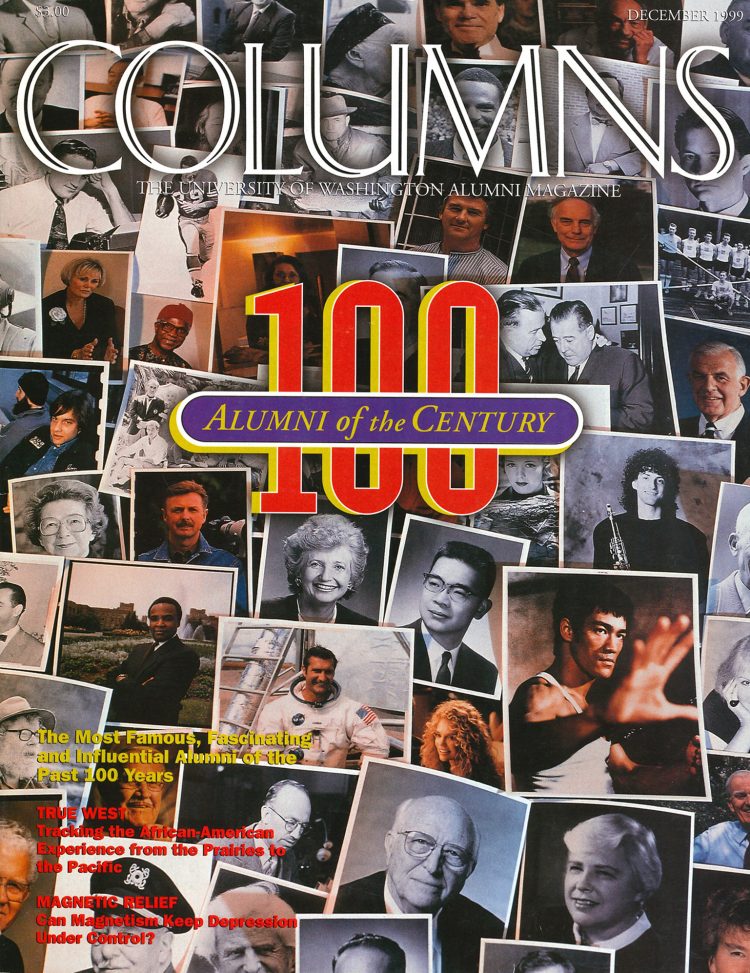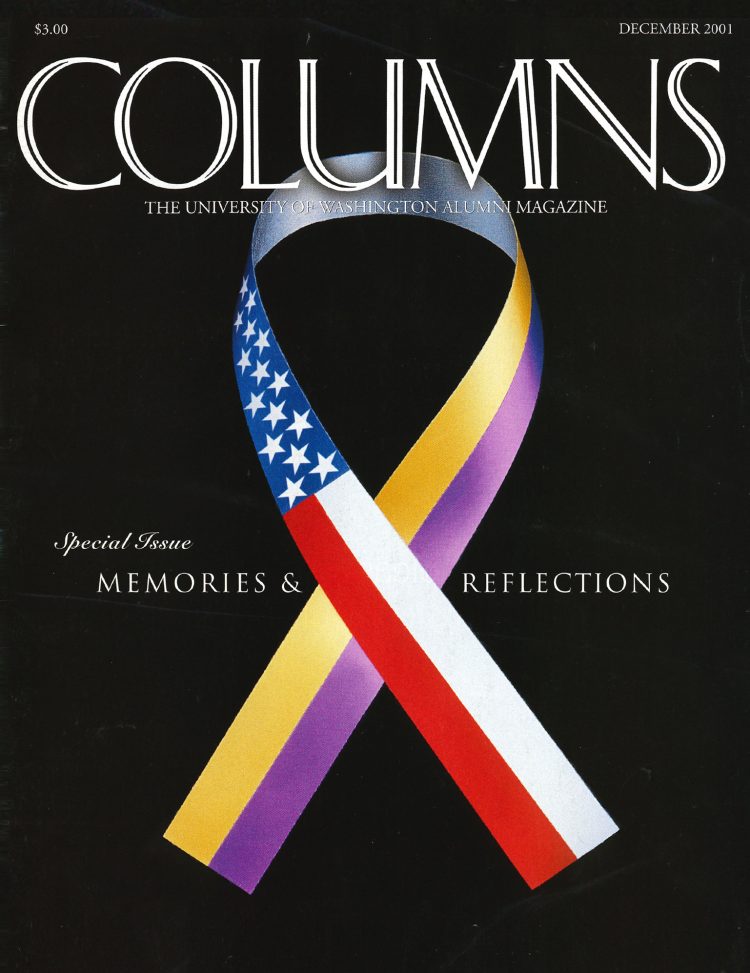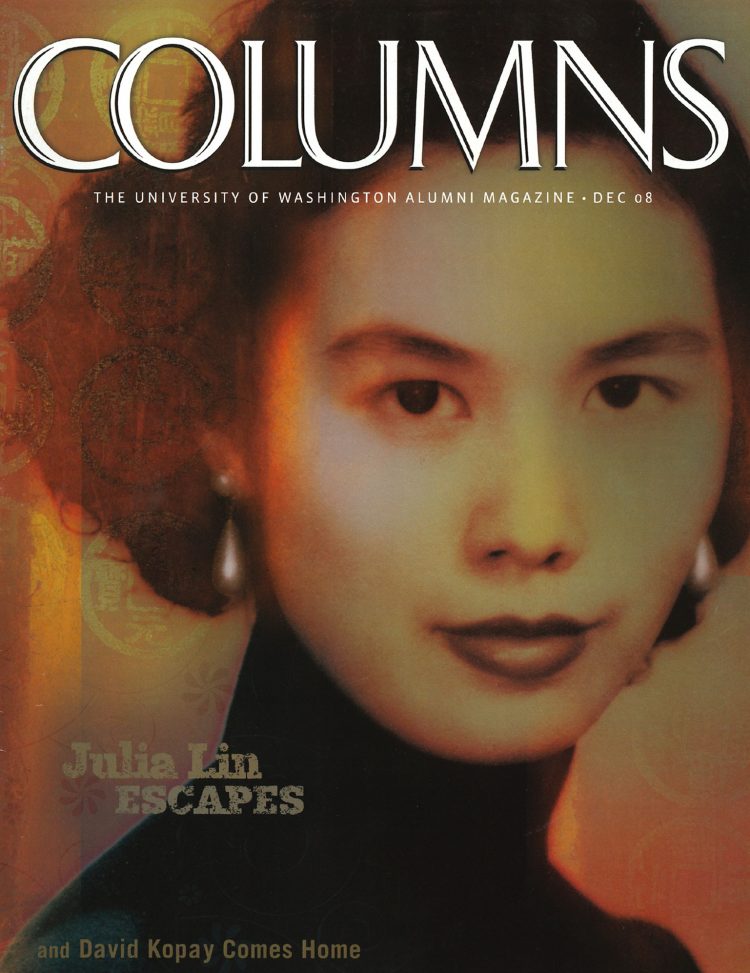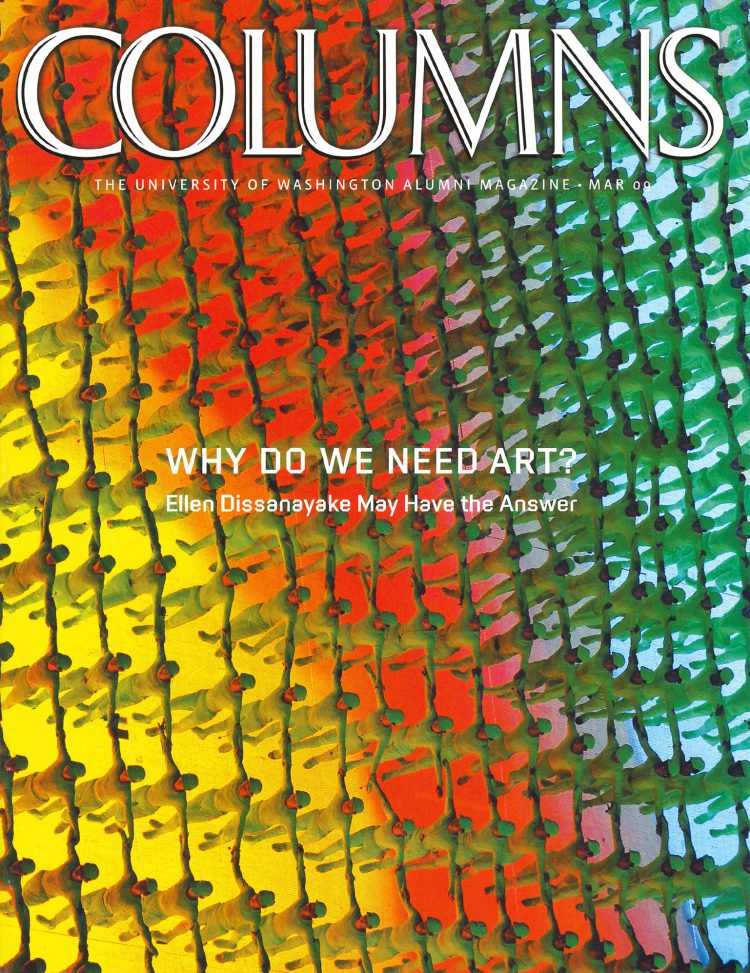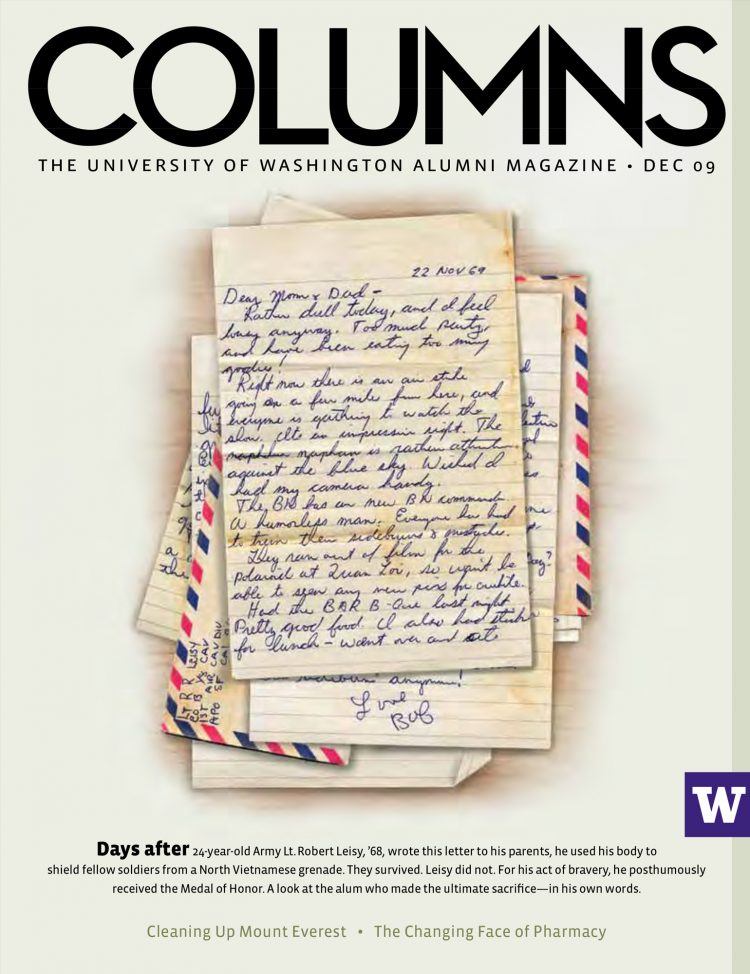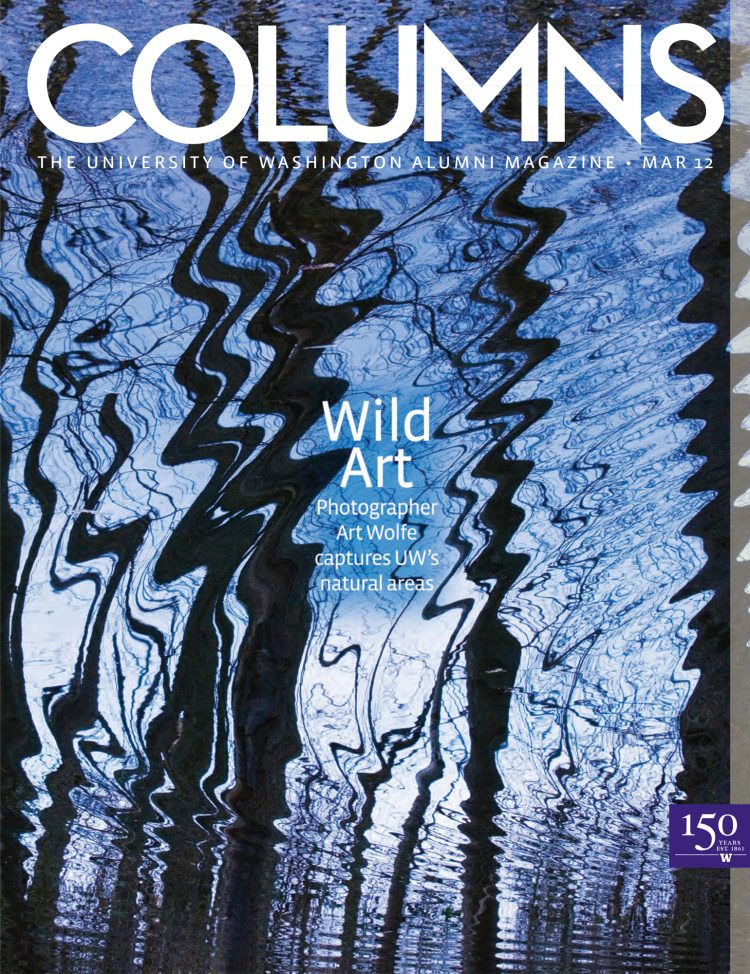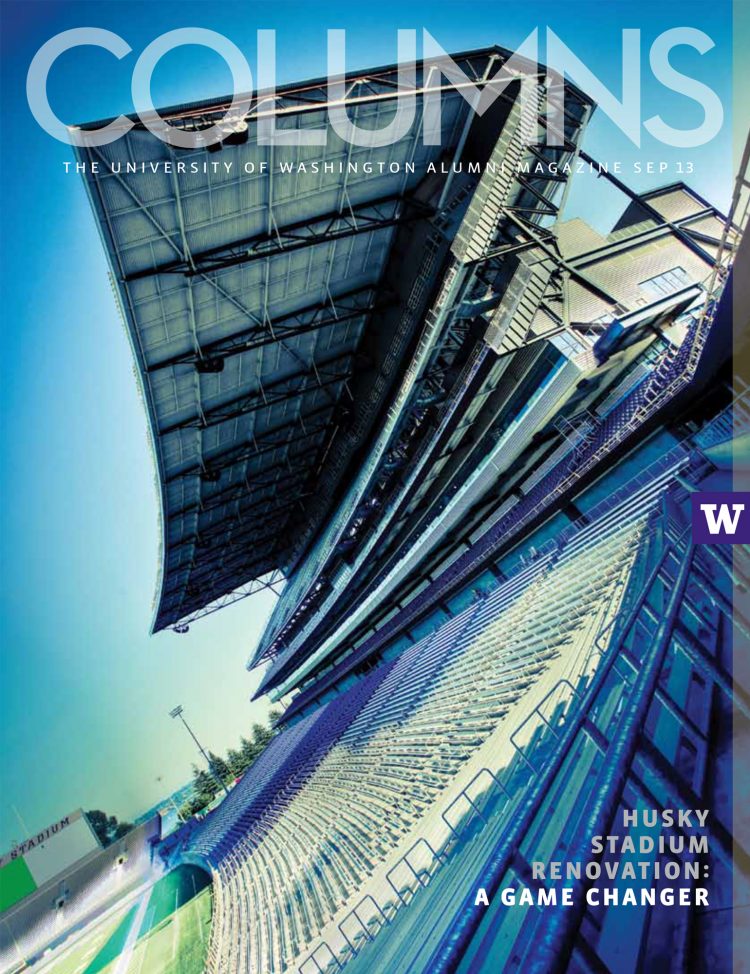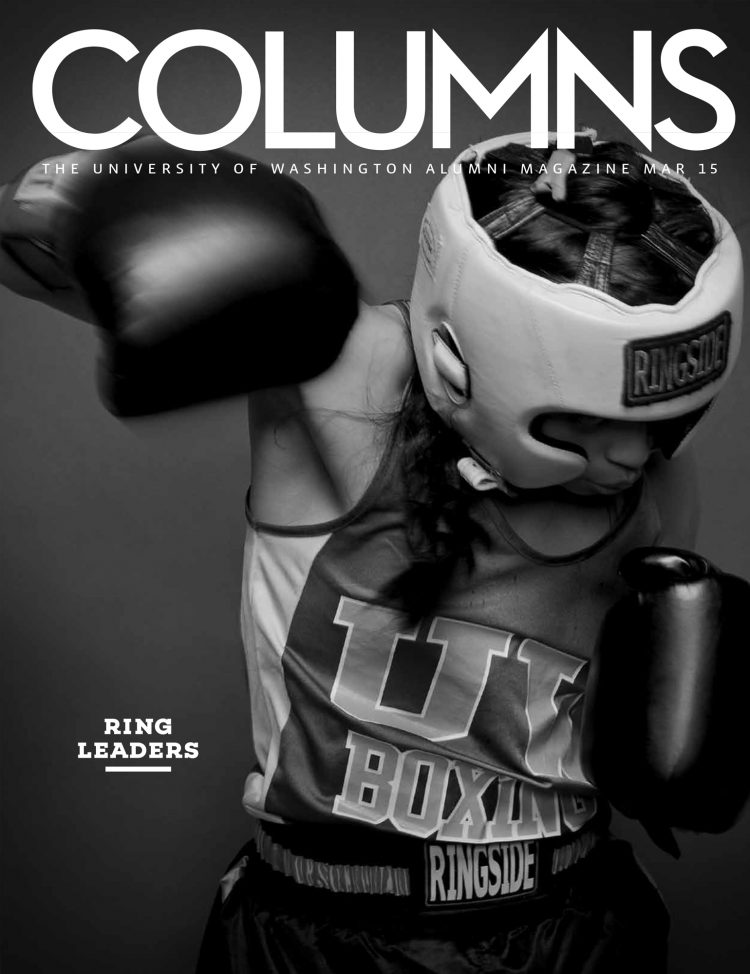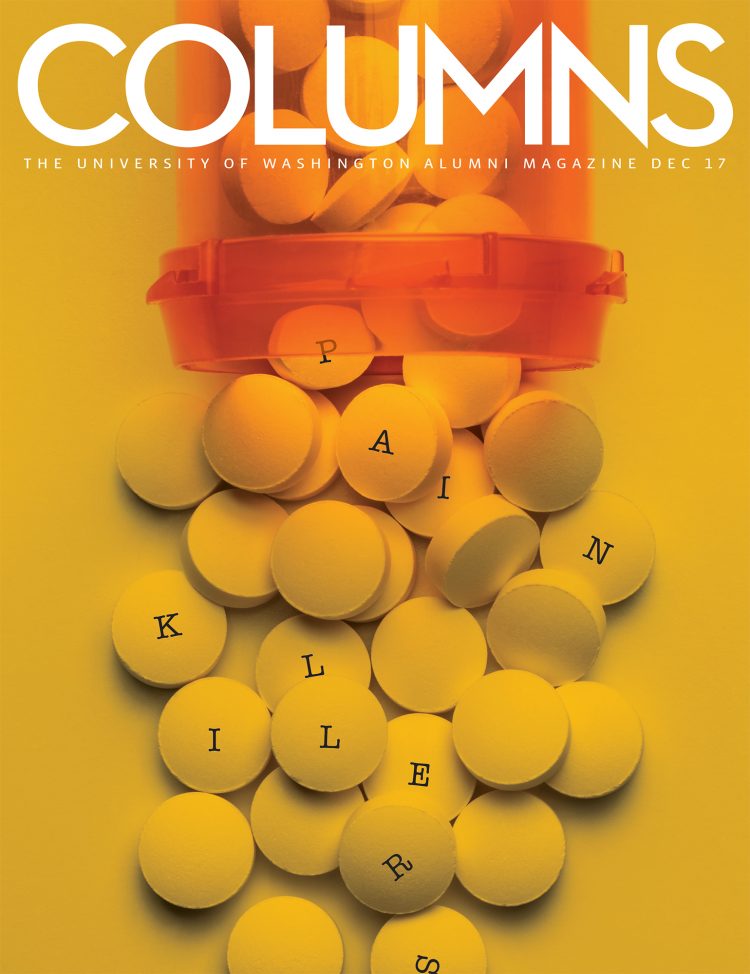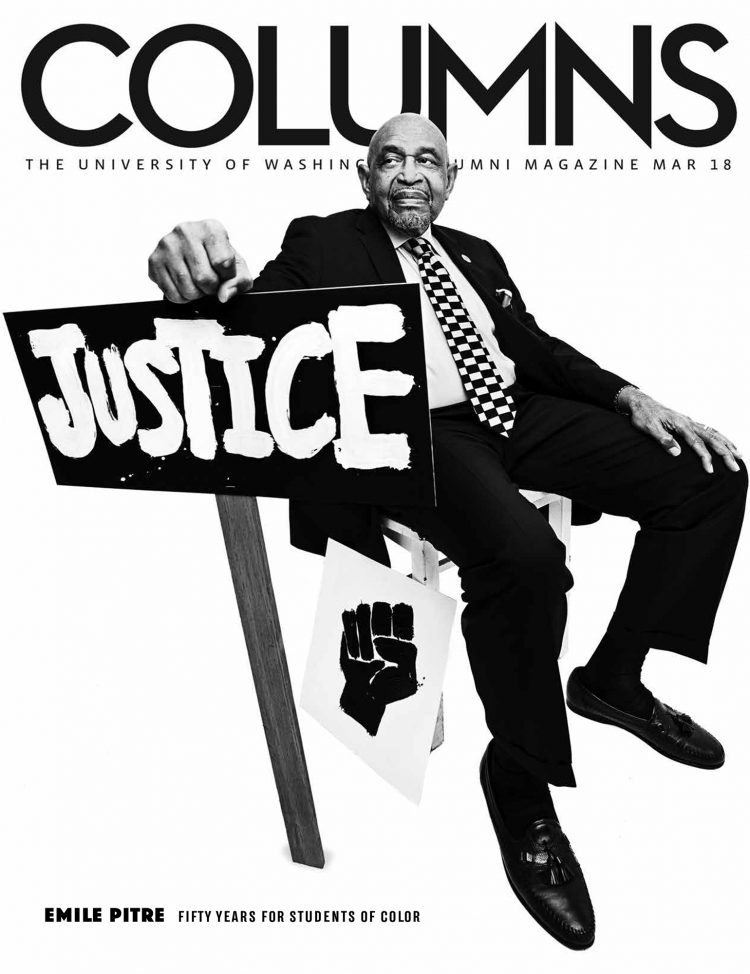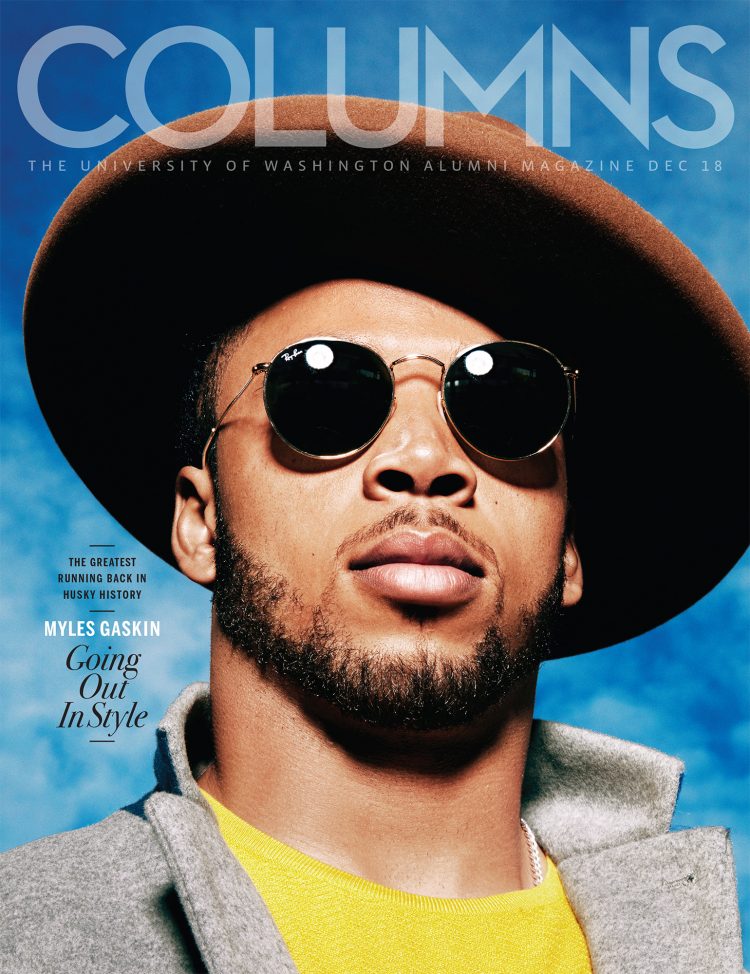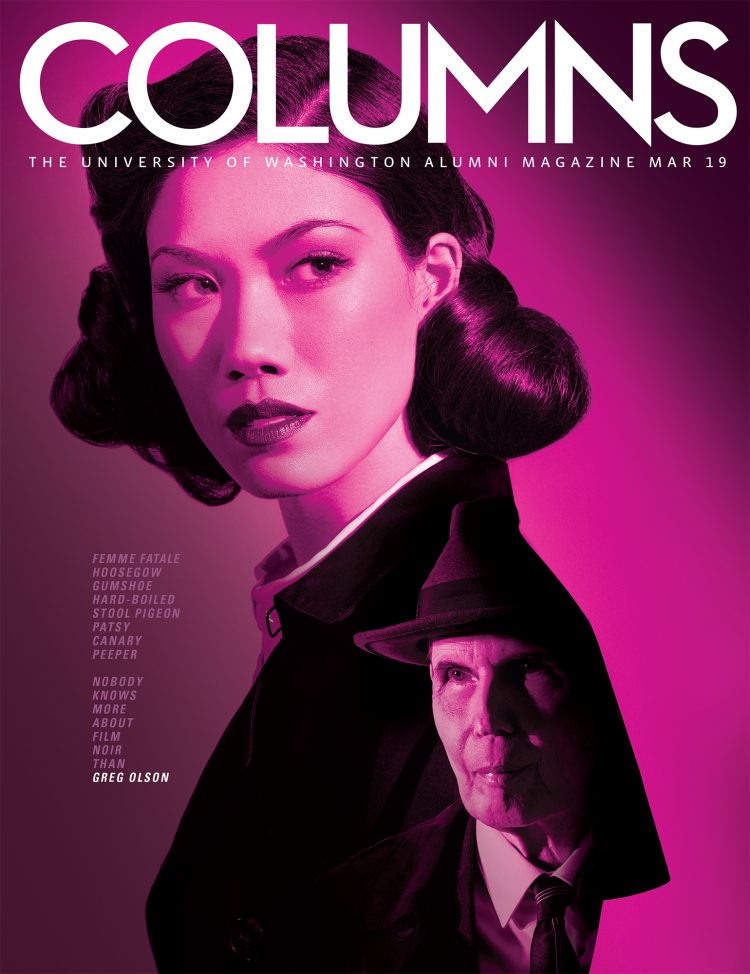25 years of Columns:
The funny, the stressful and the amazing
25 years of Columns:
The funny, the stressful and the amazing
25 years of Columns:
The funny, the stressful and the amazing
As our publication evolves into University of Washington Magazine, our editor looks back on a quarter century with Columns.
By Jon Marmor | August 21, 2019

Nineteen aught eight was an exciting year. Theodore Roosevelt was president, the first ball was dropped in Times Square to welcome the New Year for the very first time, and the world heralded the invention of the upright vacuum cleaner. It was also the year the University of Washington debuted its alumni publication, the Washington Alumnus. After a wild ride over the decades—including two budget-related hiatuses, a depression, recessions, two world wars and more—the magazine underwent a major overhaul in 1989. The name was changed to Columns and the launch of the new publication coincided with the launch of the University’s first major fundraising initiative, the Campaign for Washington.
Today is an equally exciting day, for we are unveiling a redesigned magazine, complete with a new name (University of Washington Magazine), new look and new physical appearance (a larger size, a spine and new paper). But some things are not changing; the magazine will continue to showcase the eye-opening stories about this incredible institution and its alumni community as well as the impact they have on the world.
I have had the good fortune to be a part of this magazine since 1993, its fourth year of existence as Columns. In those 26 years, I helped produce editions and stories that were fascinating, poignant, touching, and funny. As we welcome our future, we take a moment to look back.
My favorite magazine covers
From left to right:
- 100 Alumni of the Century, December 1999 (more about this at the end of the article)
- Memories and Reflections, December 2001 (about the back-to-back tragedies of 9/11 and 9/12)
- Julia Lin, December 2008 (Maya Lin’s mother escapes China in 1949 with $20 sewn into the sleeve of her dress)
- Beijing Olympics, March 2009 (about the need for art in our culture)
- Letters Home, December 2009 (about Lt. Robert Leisy, who received the Medal of Honor for his bravery during Vietnam)
- Art Wolfe, March 2012 (incredible images of Union Bay Natural Area)
- Husky Stadium Renewal, September 2013
- Ring Leaders, March 2015 (about the UW Boxing Club)
- Pain Killers, December 2017 (about the opiod epidemic)
- OMA&D’s 50th Anniversary, March 2018
- Myles Gaskin, December 2018
- Greg Olson, March 2019 (about the SAM employee and film noir fan)
My favorite issue
March 2014, “Epic Journeys: Everest, Vietnam, Salonica, Home. Four unlikely places. Four paths to hope.”
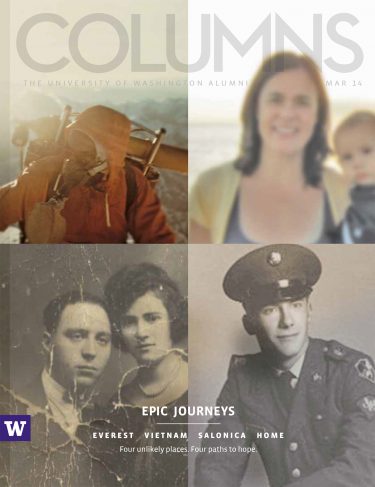
In my view, this was the best collection of feature stories we ever had in one issue: Professor Devin Naar’s quest to revive a language on the verge of extinction; the legendary mountain climbers who have UW connections; Social Work Professor Jennifer Stuber’s heartbreaking drive to bring suicide prevention to the top of mind of health-care providers everywhere – based on tragic personal experience; and one alum’s return to Vietnam after 40 years to help search for the remains of two comrades who were killed in action – in a bunker he designed.
My favorite stories
- “Seeing Red” by Nancy Wick, December 1997. Nancy’s upsetting account of what happened in 1946 on the UW campus when three professors were fired for being Communists.
- “The Stolen Years” series by Editor Tom Griffin, December 2005 and March 2006. Tom’s incredibly well-researched, poignant account of the UW’s Asian American students who were sent to internment camps in World War II, as well as the University’s efforts to try to help them. This series inspired the University to award honorary degrees to those Asian American students in 2008. This was absolutely one of the most important stories the magazine ever produced, and it deservedly received national acclaim.
- “Escape Artist” by Jim Kahn, March 2013. This started with one of those phone calls out of the blue from an alum who had a story to share about a former UW history professor who, unbeknown to most, devised the escape-and-evade tactics for Allied pilots downed behind enemy lines in World War II. Those tactics are still being used today.
- “Reconstructing Hope” by Diane Mapes, June 2013. Diane’s first-person account of her participation in a clinical trial at UW Medical Center for breast reconstruction was one of the most powerful, personal stories I have ever read or published. She was incredibly brave to let us into her world, and share her experiences with humor, grace and humanity.
- “We Will Come Back for You” by Deanna Duff, March 2014. The heart-wrenching tale of Rick Kirchner, a College of Built Environments alum who served in Vietnam as an engineer and was haunted by the fact that two comrades were killed in action in a bunker he designed. Forty years after the war, he went back to Vietnam to try to help find their remains. This one still causes a lump to form in my throat.
- “Finding My Father” by Colby White, March 2015. Colby’s dad was one of the Boys in the Boat, and he submitted an essay about his uneasy relationship with his dad, John White, ’39. Art Director Ken Shafer created a devastatingly simple, haunting image to open this two-page spread.
- “Dying of a Terminal Illness, Living on the Streets” by Julie Garner, photos by Ron Wurzer, June 2016. An extremely moving piece that featured UW Medicine Harborview Medical Center’s one-of-a-kind program that provides palliative care for the homeless. Julie and Ron interviewed and photographed two patients, as well as their caregivers, and the resulting story is one that still stops me in my tracks.
- “The Kids of Union Bay” by Peter Kahle, September 2016. Peter grew up where University Village now is, at the bottom of the N.E. 45th Street Viaduct, in what was called Union Bay Village. It’s a touching, funny account of living in married student housing in the 1940s and 1950s.
- “In the Heart of Yakima” by Misty Shock Rule, December 2016. This eye-opening story profiled Dulce Gutierrez, ’13, an Eastern Washington native who became the first Latina elected to the Yakima City Council.
- “Yes, I am a Boy” by Quinn Russell Brown, September 2018. In this national award winner about a UW Bothell grad by the name of Kevin Ninh, known online as Flawless Kevin, Art Director Ken Shafer and writer-photographer Brown built sets and acquired props that led to a clean yet powerful photo shoot and an elegant spread accompanying a remarkable personal story.
My funniest memory
September 2013 issue. The renovation of Husky Stadium was our cover story. For our Character feature, I decided to do something different by publishing an interview with Dubs about the new stadium and his role at home football games. I arranged for a very good friend & stand-up comedian, Karla Tofte, to write the text from Dubs’ point of view (it is hilarious).
I then arranged a photo shoot with Dubs to happen in a quiet corner inside Hec Ed. Photographer Ron Wurzer set up everything and tested the flash, he always does. To our amazement, that spooked Dubs and he would not sit for us. I couldn’t believe it. Here was a dog who was used to being in a stadium of 70,000 people screaming their heads off and hearing cannons go off, but a camera flash unnerved him. I ended up needing to hire a pet portrait specialist (I never heard of such a thing). What a smart thing that was; the studio had lights buried in the walls, and the photographer walked around talking to Dubs while carrying handfuls of peanut butter. It did the trick. Whew.
My most stressful moments
December 2001 issue. This issue was well underway when 9/11 happened. Editor Tom Griffin and I had to tear up the magazine to plan coverage of this incredible tragedy. But the next morning, more bad news hit us flush in the face: we learned of a plane crash in Mexico that killed 16 alumni and Husky football fans. In addition to producing some 9/11 stories and photos, I had the assignment of covering the Mexico tragedy. That required me to visit and speak with all of the families and survivors of those killed in Mexico. I never made it a day without shedding tears.
September 2000 issue. In the span of a couple of two months in the summer of 2000, two shootings on and near the UW campus stunned the community. A pathology resident who was distraught at being terminated, Jian Chen, killed his mentor, Professor Rodger Haggitt, in the UW health sciences complex and then turned the gun on himself. A few weeks before that, a UW freshman, James Hunter Sanderson, apparently high on LSD, jumped on the hood of a pizza delivery driver’s car and was shot and killed. Delving into such a traumatic topic that was a big topic of conversation was a tremendous challenge—especially when I spoke with James’ father. As a dad myself, I could never imagine what he was going through.
Building the big lists
Over the years, we have produced three issues devoted to lists, which readers (like me) absolutely love. The first was “100 Alumni of the Century” in December 1999; then came December 2002’s “Lasting Legacies: 101 UW Achievements,” and in June 2008, the “Wondrous One Hundred,” which honored 100 living alumni. They made for dazzling reading. Still do.
Now, putting these issues together was a daunting task, as you can imagine. To do them right, we drafted committees of experts on and off campus to offer names from every imaginable field, and then to debate who would make the cut. Those were some of the most entertaining and informative discussions I have ever been a part of.
Once that was settled for the “100 Alumni of the Century” issue, I took on the job of photo researcher, meaning it was up to me to track down 100 photos—and this was in the pre-digital days. That meant calling all over the country and the world to borrow prints. My favorite memory from that issue: One alum we honored was the late Chet Huntley, ’42, the NBC news anchor who was one of the most famous newsmen of our time. In 1999, nearly three decades after his final broadcast, I called NBC headquarters in New York to request a photo, and the receptionist said, “Who?”
The 2008 “Wondrous One Hundred” was another fun but enormous challenge. I had actually been working as the UW Alumni Association’s communications manager when Editor Tom Griffin retired. I was asked to help out in the middle of production and jumped in to find photos, only this time it was a little easier because something called the internet and email were quite helpful.
As I look back on those three issues, I don’t think ever said the word “wow” as often as I did then. I had always been impressed with this place, but what I learned completely blew me away. And now, 26 years after I started working at the magazine, that sense of awe and appreciation still sticks with me. When I walk on campus, I am struck with the sense of enormity of the University’s positive impact. It will hit me that I could be walking into the same building where a MacArthur Foundation “Genius” award winner works. Or where a Nobel Prize winner came up with the idea that led to a medical breakthrough. Or where 19-year-old students started on their way to become the leaders and builders and innovators who will change the world. For that, I am forever grateful, and I am honored to have been able to play a small role in telling their stories.
